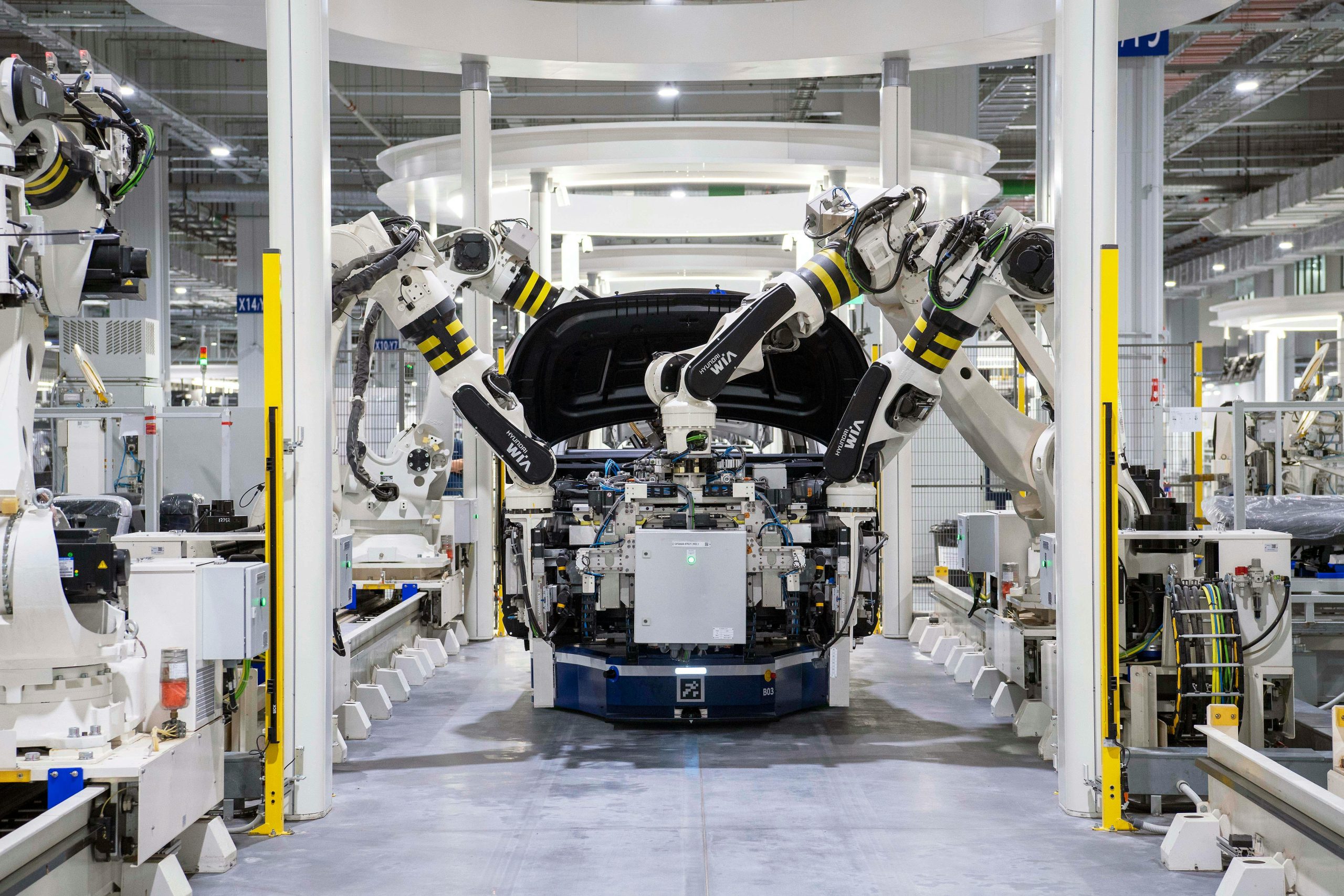How do Machine Learning Models Really Work

Table of Contents
- 1 Supervised Learning
- 2 Unsupervised Learning
- 3 Reinforcement Learning
- 4 Data Preprocessing
- 5 Data Cleaning
- 6 Feature Engineering
- 7 Data Splitting
- 8 Algorithm Selection
- 9 Model Training
- 10 Loss Function
- 11 Model Evaluation
- 12 Model Deployment
- 13 Model Serialization
- 14 API Development
- 15 Case Study: Predicting Customer Churn
- 16 Challenges and Future Directions
Machine learning is an exciting field that brings together data science, statistics, and computer science. Even though it started in the middle of the 20th century, it has moved quickly thanks to advances in computing power and the access of huge data sets. The use of machine learning models—supervised, unsupervised, or reinforcement learning—in the technology, healthcare, and financial sectors is growing. This training and optimization allow these models to be regularly updated. Machine learning is still an important driver in creativity and problem-solving in the digital age, notwithstanding problems with algorithmic bias and data privacy.
Supervised Learning
Supervised learning is a kind of artificial intelligence (AI) where machines learn from labeled examples to make accurate predictions. it will be widely used to improve many aspects of life, including email services, voice assistants (like Siri and Alexa), finance, healthcare, education, and language translation. In healthcare, it helps doctors diagnose diseases by analyzing medical images. In self-driving cars, it recognizes traffic signs and pedestrians to ensure safe navigation.
Unsupervised Learning
In an unsupervised learning environment, artificial intelligence (AI) systems learn from data without labeled examples, recognize relationships and structures. It has lots of uses for understanding and holding data. To improve their marketing efforts, groups can use it to classify customers based on their behavior. Banks use it to identify transactions that are out of the ordinary and could be fraud. By studying your tastes, streaming services promote movies and music to you. AI can also analyze text and visual data to detect patterns, which makes searching and organizing information easier. Researchers use it to organize large amounts of data, such as academic papers. Unsupervised learning improves the understanding of complex data, developing the impact and value of technology.
Reinforcement Learning
Reinforcement learning is a kind of artificial intelligence (AI) in which robots learn by trial and error—trying various behaviors and observing what happens. It will be employed to improve many kinds of factors of living. Robots use it, for instance, to learn how to pick up objects and move over obstacles. Reinforcement learning makes competitors in video games smarter, and it’s also used by self-driving cars to make safe driving decisions. It simplifies treatments in the healthcare industry, and internet businesses like Netflix use it to make better recommendations. Through the use of reinforcement learning, robots can learn from their experiences and grow more intelligent and useful in our everyday lives.
Data Preprocessing
An essential stage in artificial intelligence (AI) is data preparation, which involves getting unprocessed data ready for examination. It will be essential to ensure the effectiveness of AI systems. Data is cleaned and arranged to get rid of any mistakes, duplication, or missing values during the preparation stage. This stage guarantees the accuracy and dependability of the data. It also involves structuring data so that AI models can comprehend it, including changing text to numbers or standard values to a common scale. Preprocessing data helps boost the success and clarity of AI models, which produces more useful and predictions that are precise. All things taken into account, data preparation is necessary to turn unstructured, raw data into helpful information that AI systems can be use to make wise choices.

Photo by Anna Shvets from Pexels: https://www.pexels.com/photo/business-partners-working-on-schemes-and-charts-on-papers-5324972/
Data Cleaning
When working with data, especially when we depend on it for multiple purposes, data cleaning is a necessary step. It involves fixing or removing wrong, corrupted, or lacking data from a dataset. This process ensures the true nature and durability of the data. Typographical correction, value filling, and duplicate entry removal are examples of data cleaning chores. Since AI systems and other technologies rely on high-quality information, clean data helps in their decision-making. Any research or predictions made based on the data may be incorrect or misleading if the data is not cleaned. In summary, data cleaning is a fundamental part of any data project since it turns unstructured data into accurate and meaningful information.
Feature Engineering
To improve a model’s performance, an important factor in artificial intelligence (AI) is feature engineering, which is adding new features or changing ones that already exist. It will be widely used to improve the accuracy and intelligence of AI systems. During the feature engineering process, data scientists choose what data is most important and format it so that AI models can use it properly. This might involve including more variables, changing the data’s scale, or combining various data points. AI algorithms can interpret patterns and provide predictions better by carefully designing these properties. Because it directly affects AI applications’ performance and helps them provide better outcomes and insights, feature engineering is essential.
Data Splitting
Data splitting is an important stage in the machine learning workflow because it ensures that models are properly trained and accurately evaluated. This procedure entails partitioning the dataset into two subsets, usually a training set and a testing set. The training set is used to train the model, which then learns from the data. The testing set, on the other hand, is used to evaluate the model’s performance on previously unseen data, offering an unbiased assessment of its predictive capacity. Data scientists can better determine how well the model generalises to new data if they keep these sets separate. This stage is critical in avoiding overfitting, where a model performs well on training data but poorly on real-world data. Proper data splitting is the cornerstone for constructing robust,
Algorithm Selection
The most important step in developing artificial intelligence (AI) systems is selecting algorithms. selecting the appropriate algorithm will be important for producing exact predictions and judgments. For example, different algorithms work better for language processing, image recognition, and trend prediction. The type of data being used and the particular problem that needs to be solved determine which approach is best. While a poor decision can result in false findings, a smart decision can increase the effectiveness and efficiency of an AI system. Data scientists can determine which algorithm performs best by carefully checking out multiple options, ensuring the AI system operates efficiently and achieves its objectives.
Linear Regression
In machine learning and research, linear regression is a straightforward yet useful tool for making prediction about values. Because to its simplicity and success, it is still in common use. Finding the best-fit line through a collection of data points is how linear regression operates. We are able to predict one variable based on the other since this line illustrates the relationship between the two variables. For instance, based on height, it may determine an individual’s weight. We can understand how changes in one element affect another and develop well-informed recommendations by looking at this linear relationship. Because it enables us to interpret data and make exact figures, linear regression is useful in a wide range of disciplines, including finance, medicine, and the social sciences.
Decision Trees
A common machine learning technique for prediction is the decision tree. They are still important because of their efficiency and simplicity. Similar to a flowchart, a decision tree begins with a query or condition and branches out in response to the responses. The path is straightforward and easy to follow, with each branch leading to additional queries or choices. A decision tree, for instance, can assist a physician in making an accurate diagnosis by asking questions regarding symptoms and recommending the most likely diagnosis. Decision trees are useful for a variety of applications because they can handle both categorical and numerical data. They are frequently employed in industries like marketing, finance, and healthcare and assist us in making sound, clear judgments.
Support Vector Machines (SVM)
In machine learning, support vector machines (SVMs) are an effective tool for tasks combining regression and classification. SVMs are still widely used, because they are good in identifying trends in data. The best border, between several classes in the data is determined by SVMs. This border helps in the accurate classification of new data points by the SVM. SVMs, for instance, can be used to categorize emails as spam or not. When there are several features in the data and the classes are difficult to distinguish, they are especially helpful. SVMs are a dependable option in a variety of domains, including computer science, image recognition, and text classification, because of their high accuracy and capacity to manage difficult datasets.
Neural Networks
Artificial intelligence (AI) uses neural networks as a fundamental technology to mimic how the human brain functions. They are heavily used due to their capacity for learning and exact predictions. Layers of connected nodes, or “neurons,” that process data make up neural networks. In order to identify patterns and make decisions, they learn by changing the connections between neurons in response to the information they are given. Neural networks, for instance, can recognize things in pictures, understand speech, and predict trends. Because they can manage big, intricate datasets and develop over time as a result of gaining additional data, they are strong. Neural networks play a crucial role in various domains such as healthcare, finance, and technology, as they facilitate the resolution of intricate issues and enable smart prediction.
Ensemble Methods
Machine learning techniques known as ensemble methods are highly effective in raising prediction accuracy. By combining various models to produce better conclusions, they are widely employed . Using multiple models and combining their predictions, ensemble approaches do not depend on a single model. Both performance and error reduction are achieved with this strategy. In climate prediction, for instance, combining several models can result in more accurate predictions. This is where ensemble methods can be applied. Their range of skills and ability to function successfully in many kinds of industries, including technology, healthcare, and finance, make them invaluable. In many cases, employing ensemble approaches yields quicker and dependable results.

Photo by Vanessa Loring: https://www.pexels.com/photo/group-of-students-making-a-science-project-7868885/
Model Training
In machine learning, model training is an important stage when an algorithm gains knowledge from data. It’s still necessary to build AI systems that work well. An algorithm is taught how to generate predictions or judgments through the usage of a dataset during model training. In order to reduce errors and boost accuracy, the algorithm modifies its settings. In this process, input data is fed into the model, and after comparing the model’s predictions with the reality, it is improved to achieve higher accuracy. High-quality data and proper algorithm calculation are necessary for successful model training. Accurate prediction and decision-making plays an important role in various domains, including healthcare, finance, and technology, as they can yield major effects.
Loss Function
A fundamental idea in machine learning, a loss function helps in the learning and development of models. It is still necessary to train exact AI systems. The degree to which a model’s predictions and actual results match is shown by the loss function. By modifying its parameters throughout training, the model attempts to minimize this loss. Better results are indicated by a smaller loss. For instance, the loss function determines the gap between expected and actual prices in a model that predicts home prices. The accuracy of the model increases with the reduction of this difference. Loss functions are important because they direct the process of learning, assisting models in making more accurate predictions and choices across a range of applications.
Optimization
In machine learning, optimization is an essential process that aims to enhance model performance. It will be vital to developing accurate and successful AI systems . Optimizing a model involves changing its parameters in order to reduce mistakes and improve predictions. In order to ensure that the model learns from the data smoothly, this method uses algorithms to determine the optimal values for these parameters. By modifying its decision-making standards, optimization, for example, helps in teaching a self-driving car how to travel safely. Better accuracy and efficiency can be attained by optimizing models, which increases the dependability and use of AI applications across a range of industries, including technology, finance, and healthcare.
Hyperparameter Tuning
In order to improve a model’s performance, we might tweak its parameters, a process known as hyperparameter tuning. , it will be essential for developing AI systems that work. Hyperparameters are the configurations, such as the learning rate or the number of layers in a neural network, that regulate how a model learns from input. In order to identify the ideal combination that produces the most accurate predictions, tuning these hyperparameters entails evaluating a range of values. For instance, hyperparameter adjustment greatly enhances the model’s ability to read spoken words during training for voice recognition. We can make AI models more dependable for a range of jobs and applications by tweaking these settings to ensure best accuracy and efficiency.
Model Evaluation
In machine learning, measuring the success of a model is a necessary step that depends on assessing its level of performance. It will be important to guarantee precise and trustworthy AI systems . In the process of verifying the model, we run it on an independent dataset that it has never seen before. It helps in our understanding of the model’s prediction performance on fresh, untested data. Performance is measured using key performance indicators, including F1 score, recall, accuracy, and precision. Model evaluation helps find flaws and guarantees that the models are prepared for practical use. By carefully considering models, we may put our faith in their predicts and improve the way we make decisions in industries like technology, healthcare, and finance.
Accuracy
In machine learning, accuracy is an important metric that indicates how well a model generates accurate predictions. exactness will still be important when rating AI systems. It is computed as the proportion of correct predictions to all of the statements that were made. A high accuracy indicates a dependable and effective model. In a medical diagnosis model, for instance, high accuracy means that the majority of the predictions made about the conditions of the patients are accurate. For activities where accurate predictions are critical, accuracy plays a critical role in assisting us in understanding the success of the model. We can guarantee that AI systems deliver reliable and beneficial outcomes in a range of areas, including technology, finance, and healthcare, by putting an emphasis on accuracy.
Precision, Recall, and F1-Score
In machine learning, precision, recall, and F1-score are important metrics that are used to assess how well AI models perform, particularly in classification tasks. Recall gauges how well the model locates all relevant cases, precision assesses the accuracy of positive predictions, and the F1-score strikes a balance between the two. Taken as a whole, these measures offer a thorough understanding of a model’s success, confirming that AI systems are dependable and beneficial across a range of industries, including technology, healthcare, and finance.
Confusion Matrix
In machine learning, a confusion matrix is a table that compares real and predicted values to assess how well categorization models perform. It is made up of four parts: false positives, which are wrongly expected positives, false negatives, which are incorrectly projected negatives, and true positives, which are accurately predicted positives. This matrix is important to improve accuracy and dependability in a variety of applications, including healthcare, finance, and technology. It helps pinpoint the areas where the model is incorrect and offers insights into its strengths and shortcomings.
ROC and AUC
Machine learning tools for testing classification models include the ROC (Receiver Operating Characteristic) curve and AUC (Area Under the Curve). Plotting the true positive rate against the false positive rate at different boundary values, the ROC curve illustrates how sensitivity and specificity are traded off. The area under the ROC curve (AUC) is used to quantify overall performance; a greater AUC denotes a better model. Insights into a model’s precision and capacity to discern between positive and negative examples are provided by ROC and AUC used together, helping in selecting the most appropriate model for industries such as technology, healthcare, and finance.

Photo by Andrea Piacquadio: https://www.pexels.com/photo/elderly-white-hair-worker-using-machine-3846559/
Model Deployment
Making a machine learning model useful in the real world is known as model deployment. The model must be built into a working environment to be able to process real-time data and create exact predictions. Physical setup, performance monitoring, and necessary model updates are all included in this. When AI research is applied effectively, it becomes a useful tool that improves decision-making and automates operations in industries like technology, healthcare, and finance.
Model Serialization
Model serialization involves changing a machine learning model into a format that facilitates effortless storage, sharing, and repurposing. employing models in practical applications will be essential for ensuring speed and consistency. System communication and integration are made possible by the portability of serial models. In industries like healthcare, banking, and technology, AI solutions are more useful and scalable thanks to this method, which speeds up AI development and deployment.
API Development
The process of developing interfaces that enable software systems to communicate is known as API development. It will be essential to incorporate social media and payment systems into apps. Developers can create applications more quickly by reusing elements when an API is developed effectively, which ensures ease of use, security, and optimal performance. In sectors like healthcare, finance, and technology, APIs promote efficiency and innovation by facilitating smooth system communication.

Photo by Meruyert Gonullu from Pexels: https://www.pexels.com/photo/crop-unrecognizable-person-working-on-laptop-6589064/
Monitoring and Maintenance
Machine learning models and software systems require constant observation and upkeep. Updating and improving the system over time constitutes maintenance , whereas monitoring requires regularly reviewing performance and spotting problems. Collectively, they guarantee that AI software and models continue to operate effectively, adjust to new situations, and deliver dependable outcomes in industries like technology, healthcare, and banking.
Case Study: Predicting Customer Churn
Data Collection and Preprocessing
Successful machine learning models require preprocessing and data collecting. Data collecting. This involves gathering useful data from a variety of sources. By addressing missing values, eliminating errors, and normalizing the data, data preparation cleans and prepares this information. When combined, these actions ensure that machine learning models are fed high-quality data, which improves performance and yields accurate predictions in industries such as technology, healthcare, and finance.
Algorithm Selection and Training
Choosing and training algorithms are essential phases in creating machine learning models. The available data, and the intended result will all play a role in choosing the best algorithm. In order to teach the algorithm to recognize patterns and generate precise predictions, training involves giving it data. These actions guarantee that the model is appropriate for the job at hand and yields trustworthy outcomes, which are crucial for the implementation of AI successfully in industries such as technology, finance, and healthcare.
Evaluation and Deployment
Developing successful machine learning models requires a number of processes, including evaluation and deployment. Metrics like precision and recall are used in the evaluation process to verify the model’s accuracy and pinpoint areas that need work. Putting the model in a real-world setting to predict fresh data, connecting it with other systems, and keeping an eye on its performance are all part of deployment. Combined, these actions guarantee that AI models are trustworthy and practical in industries such as technology, finance, and healthcare.
Challenges and Future Directions
Managing huge data sets, protecting data privacy, and creating human-readable models are among the difficulties. Additionally, maintaining model accuracy as new data becomes available is challenging. The issue of bias in AI also exists, as models may give preference to one group over another.
Improving this area is part of the future directions. Researchers are trying to improve data handling and processing, data security, and model decision-making explanation. The goal are also being made to ensure that models remain neutral and accurate during their usage and to reduce bias in AI.
Overall, despite major obstacles, machine learning has a bright future because of continuous breakthroughs that increase AI’s usefulness and effectiveness in industries like healthcare, finance, and technology
Ready to take a deeper dive? Explore our advanced tutorials and join our AI enthusiast community. Let us work together to determine the future of technology!



